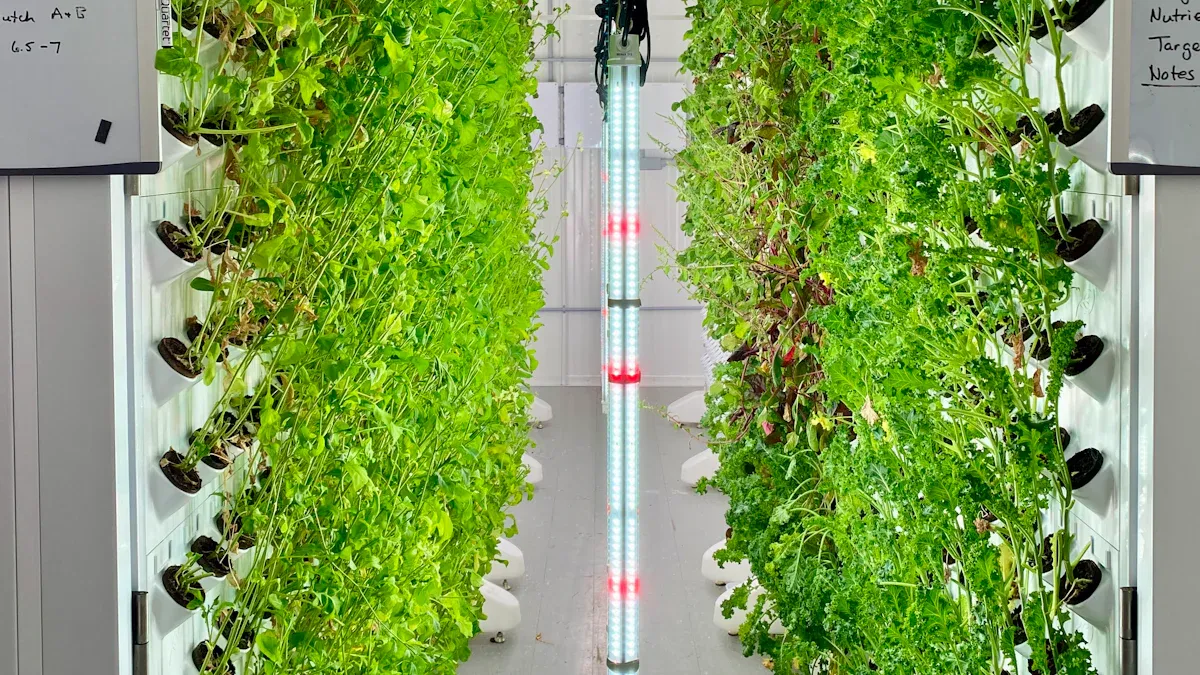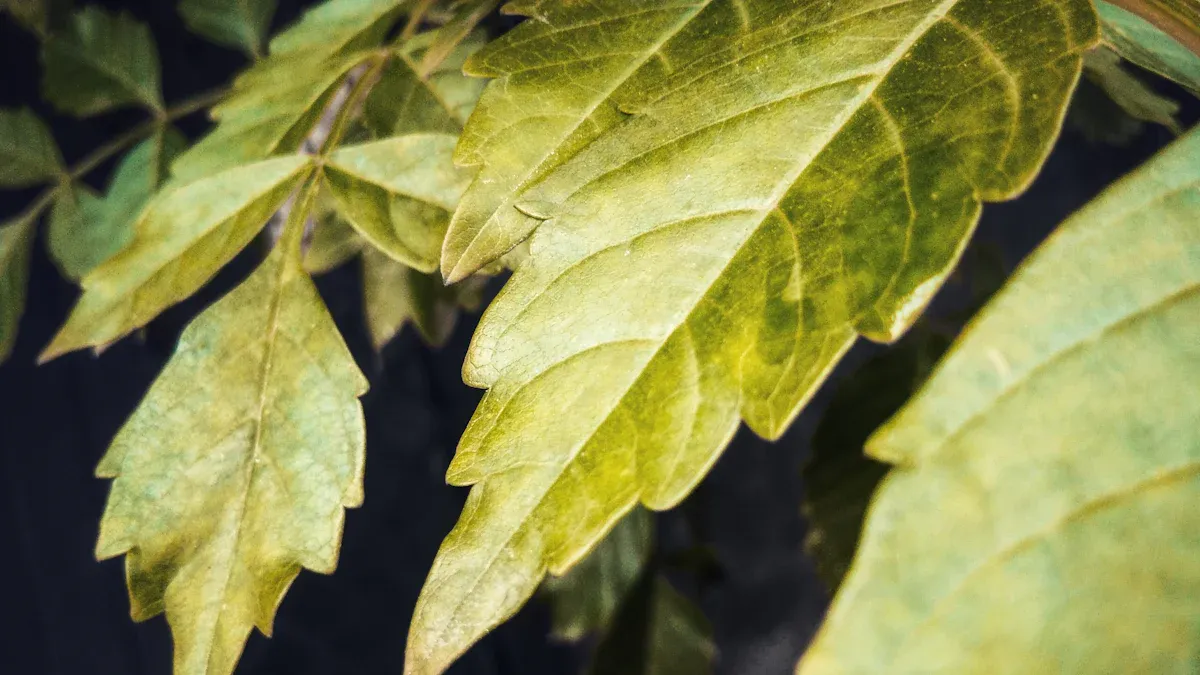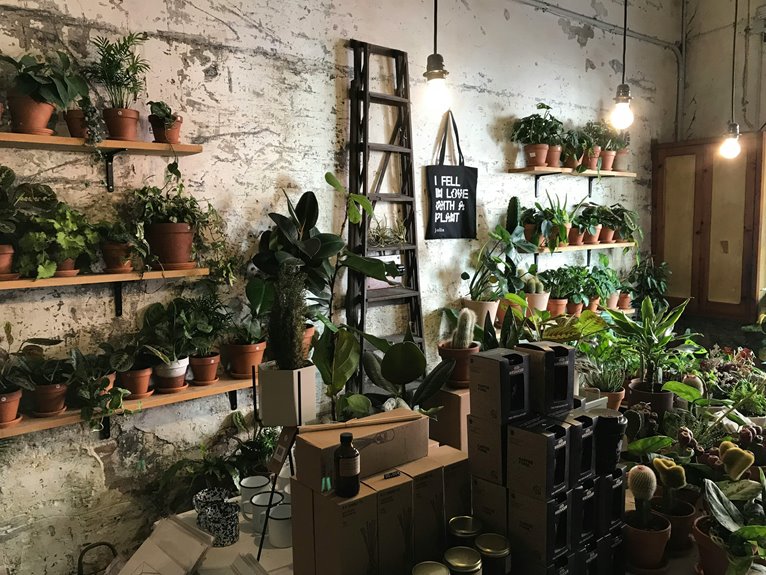
Hydroponic gardening can feel like a rollercoaster ride. One moment, your plants thrive; the next, they show signs of distress. Recognizing and addressing these common hydroponic problems is crucial for maintaining plant health. Hydroponics offers numerous advantages, such as using up to 90% less water and allowing for year-round cultivation. Overcoming these challenges can lead to a rewarding gardening experience.
Benefit | Description |
|---|---|
Water Efficiency | Uses up to 90% less water than soil-based farming, with efficient delivery to plant roots. |
Space Efficiency | Highly space-efficient, utilizing vertical growing techniques for maximum production. |
Controlled Environment | Allows for year-round cultivation with precise control over light, temperature, and nutrients. |
Reduced Environmental Impact | Minimizes land and water usage, and decreases reliance on pesticides and herbicides. |
Superior Plant Quality | Promotes healthier plants with improved flavor, aroma, and nutritional value. |
Rapid Growth and Harvest | Optimized conditions lead to faster growth cycles and increased production capacity. |
Disease and Pest Control | Soil-free environment reduces risks of soil-borne diseases and pests, lowering chemical use. |
Sustainability | Efficient resource utilization and lower carbon footprint compared to traditional farming. |
Key Takeaways
Regularly check your nutrient solution to prevent deficiencies. Monitor pH levels and ensure a balanced mix of nutrients for healthy plant growth.
Address root rot immediately by stopping your hydroponic system and cleaning affected roots. Maintain optimal conditions to prevent future occurrences.
Implement pest management strategies by keeping your garden clean and monitoring for pests. Use beneficial insects and natural treatments to control infestations.
Optimize light exposure by using a mix of natural and artificial light. Adjust light duration based on the specific needs of your plants.
Maintain stable temperature and humidity levels to support plant health. Use tools like humidifiers and dehumidifiers to manage environmental conditions effectively.
Health Issues

Hydroponic gardening can lead to several health issues for your plants. Understanding these problems helps you take action before they escalate. Here are three common health issues you might encounter:
Nutrient Deficiencies
Nutrient deficiencies occur when your plants lack essential elements. This can lead to poor growth and reduced yields. Some prevalent nutrient deficiencies in hydroponic systems include:
Nitrogen (N): Yellowing of older leaves and stunted growth.
Phosphorus (P): Dark green or purplish leaves, slow growth.
Potassium (K): Yellowing and browning leaf edges, reduced fruit quality.
Magnesium (Mg): Interveinal yellowing on older leaves, leaf curling.
Iron (Fe): Yellowing between leaf veins, reduced growth.
Calcium (Ca): Distorted growth, blossom-end rot.
Zinc (Zn): Stunted or twisted leaves, reduced fruit development.
To diagnose and correct these deficiencies, you can refer to the following table:
Nutrient Deficiency | Symptoms | Cause |
|---|---|---|
Nitrogen (N) | Yellowing of older leaves, stunted growth | Inadequate nitrogen supply |
Phosphorus (P) | Dark green or purplish leaves, slow growth | Low phosphorus levels or improper pH |
Potassium (K) | Yellowing and browning leaf edges, reduced fruit quality | Inadequate potassium supply or pH issues |
Magnesium (Mg) | Interveinal yellowing on older leaves, leaf curling | Low magnesium levels or pH problems |
Iron (Fe) | Yellowing between leaf veins, reduced growth | Inadequate iron supply due to high pH |
Calcium (Ca) | Distorted growth, blossom-end rot | Insufficient calcium supply related to pH fluctuations |
Zinc (Zn) | Stunted or twisted leaves, reduced fruit development | Low zinc levels or high pH inhibiting uptake |
To prevent nutrient deficiencies, regularly check your nutrient solution. Adjust the pH and ensure you provide a balanced mix of nutrients.
Root Rot
Root rot is a serious issue in hydroponics. It occurs when roots sit in overly wet conditions, leading to decay. Signs of root rot include brown, slimy roots and stunted growth. To treat root rot effectively, follow these steps:
Stop your hydroponic system immediately.
Remove any afflicted plants from the garden.
Rinse the roots in clean water to remove slime and debris.
Trim dead or dying root tips.
Soak the roots in a plant-safe sterilizing solution.
Drain and sterilize your hydroponic system.
Replace the now-sterilized plants in the garden.
To prevent root rot, maintain optimal environmental conditions. Ensure your nutrient solution is well-aerated and avoid overwatering. Adding beneficial microbes can also help protect your plants.
Pest Infestations
Pests can wreak havoc on your hydroponic garden. Common pests include:
Whiteflies: They damage plants with their piercing-sucking mouthparts and promote sooty mold growth.
Spider Mites: These pests lead to distorted growth and leaf necrosis.
Aphids: They cause distorted growth of new foliage and promote sooty mold.
Western Flower Thrips: They damage new growth and can spread diseases.
To manage pest infestations, consider these integrated pest management strategies:
Prevention: Maintain proper airflow and cleanliness to stop pests before they enter your system.
Monitoring: Regularly check plants for early signs of pest activity.
Biological Control: Use beneficial insects like ladybugs to manage pest populations naturally.
Chemical Control: Apply treatments like neem oil when infestations occur.
Physical Control: Use traps and barriers to prevent pests from reaching your plants.
By staying vigilant and addressing these common hydroponic problems, you can ensure a healthy and productive garden.
Environmental Issues
Hydroponic systems thrive in controlled environments. However, environmental factors can lead to significant challenges. Understanding these issues helps you maintain optimal conditions for your plants. Here are three critical environmental issues to consider:
Light Levels
Light is essential for photosynthesis. It directly affects plant growth and yield. Inadequate or excessive light can lead to poor plant health. Here are some common light conditions and their effects:
Light Condition | Effect on Growth and Yield |
|---|---|
High PPFD (Photosynthetic Photon Flux Density) | Increased biomass production and yield, improved pigmentation and structural robustness |
Dynamic lighting strategies | Maintained nutritional quality while optimizing energy use |
Far red light supplementation | Enhanced biomass production and canopy size, yield improvements of up to 39% in lettuce when applied correctly |
To optimize light exposure in your hydroponic system, consider the following recommendations:
Sunlight: Provides a full spectrum of light essential for plant growth, but its availability varies with seasons and weather.
Artificial Lighting: LED lights are efficient and adjustable, offering precise wavelengths for different growth stages.
Balancing Both: A combination of natural and artificial light is ideal for consistent year-round plant growth.
You should also tailor your light duration based on plant types:
High-Light Plants: Require 8-14 hours of light daily (e.g., tomatoes, peppers).
Low-Light Plants: Thrive with 3-6 hours of direct light (e.g., lettuce, spinach).
Day-Neutral Plants: Adaptable to various light durations (e.g., strawberries, cucumbers).
Temperature Control
Temperature plays a vital role in plant health. The optimal temperature range for hydroponic crops is between 65-75°F (18-24°C) for the nutrient solution and 70-78°F (21-25.5°C) for the air during the day. Fluctuations can lead to reduced oxygen availability, increased susceptibility to diseases, and impaired nutrient absorption. These issues ultimately result in lower yields and increased plant stress.
To maintain stable temperatures, follow these best practices:
Insulate the tank and pipes to prevent heat loss.
Use evaporative cooling, shade screens, and tank insulation to avoid overheating.
Maintain air temperature close to the desired nutrient solution temperature.
Use cold water when adding to the nutrient solution.
Employ water chillers to remove excess heat from the solution.
Consider geothermal energy or circulating cool groundwater for temperature control.
For cool solutions, insulate tanks and pipes, and use electric resistance heaters or natural gas/propane boilers for heating.
Humidity Management
Humidity levels significantly impact plant growth in hydroponic systems. Too much humidity can lead to mold and mildew, while too little can cause stress. Here are effective methods for managing humidity:
Utilize a Humidifier: This device increases humidity effectively in dry conditions.
Dehumidifier and Ventilation: Essential for reducing excess humidity, especially when temperatures rise.
Drip Irrigation or Misting Systems: Helps create localized humidity but requires careful management to avoid leaf wetness.
Regularly Check Temperature and Humidity: Use a digital thermometer/hygrometer for monitoring.
Optimize Your Heating System: Maintain stable temperatures to support consistent humidity levels.
By addressing these environmental issues, you can enhance your hydroponic garden’s health and productivity. Regular monitoring and adjustments will help you troubleshoot common problems effectively.
Hydroponic Problems with Equipment

Hydroponic systems rely on various equipment to function effectively. When equipment malfunctions, it can lead to significant problems for your plants. Here are three common equipment-related issues and how to address them.
Clogged Tubing
Clogged tubing can disrupt the flow of your nutrient solution. This issue often arises from poor water quality, inadequate filtration, or system design flaws. To prevent clogs, follow these steps:
Regularly clean and replace filters to prevent organic matter buildup.
Periodically flush your system to remove debris.
Use reverse osmosis and UV sterilization to maintain water quality.
Ensure proper pipe sizing and water pressure to reduce clog risks.
If you notice a decrease in flow rate or pressure, inspect your tubing immediately. Cleaning your system weekly can help prevent clogs and ensure smooth operation.
Pump Failures
Pump failures can have dire consequences. If a pump fails, your plants cannot receive the necessary water and nutrients. This can lead to wilting and even death. To minimize pump failures, consider these maintenance practices:
Regularly inspect pumps for obstructions and remove any debris.
Establish a routine maintenance schedule for cleaning and inspection.
Disassemble your water pump for a detailed cleaning to remove any organics or salts that might clog the filter.
If you suspect a pump failure, check for clogs in the irrigation system, including tubing and emitters. Adjust pump settings to ensure optimal flow rate and pressure.
pH Imbalance
Maintaining a balanced pH level is crucial for nutrient absorption. Most plants thrive in a pH range of 5.5 to 6.5. If the pH is too high, plants struggle to absorb essential nutrients like iron and zinc. Conversely, a low pH can lead to deficiencies in calcium and magnesium. To monitor and adjust pH levels effectively:
Use a pH meter or test kit to check your nutrient solution regularly.
Utilize solutions like potassium hydroxide or phosphoric acid to adjust pH levels.
Add buffering agents such as potassium bicarbonate to stabilize pH.
Regularly monitoring your pH levels will help you maintain a healthy nutrient solution and support optimal plant growth.
In summary, you learned about several common hydroponic problems, including nutrient deficiencies, root rot, pest infestations, light levels, temperature control, humidity management, clogged tubing, pump failures, and pH imbalances. Each issue has specific solutions that can help you maintain a thriving garden.
To minimize risks, consider these proactive steps:
Regularly inspect pumps for obstructions and establish a maintenance schedule.
Maintain excellent air circulation and control humidity levels.
Check pH and nutrient levels daily to prevent plant stress.
“The secret to success is consistent monitoring and acting swiftly to resolve problems. Studies show that regular system checks and timely adjustments can prevent up to 80% of typical growing challenges before they escalate.”
By honing your troubleshooting skills, you can ensure a successful hydroponic gardening experience.
FAQ
What is hydroponics?
Hydroponics is a method of growing plants without soil. Instead, it uses nutrient-rich water to deliver essential elements directly to plant roots. This technique promotes faster growth and higher yields.
How often should I check my nutrient solution?
You should check your nutrient solution at least once a week. Regular monitoring helps you maintain proper nutrient levels and pH balance, ensuring optimal plant health and growth.
Can I use tap water for my hydroponic system?
You can use tap water, but test it first. Tap water may contain chlorine or other chemicals that can harm plants. Consider using filtered or distilled water for better results.
What are the signs of overwatering in hydroponics?
Signs of overwatering include yellowing leaves, wilting, and root rot. If you notice these symptoms, reduce the frequency of watering and ensure proper drainage in your system.
How can I prevent pests in my hydroponic garden?
To prevent pests, maintain cleanliness and good airflow in your garden. Regularly inspect plants for early signs of infestations. You can also introduce beneficial insects to help control pest populations naturally.


